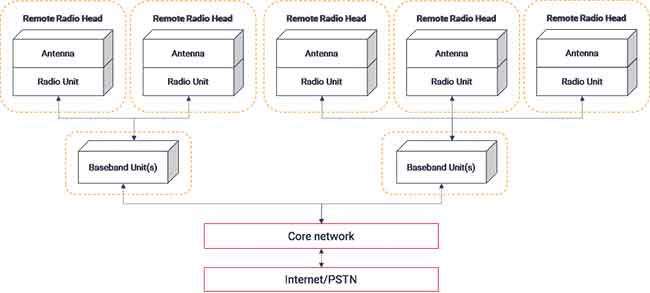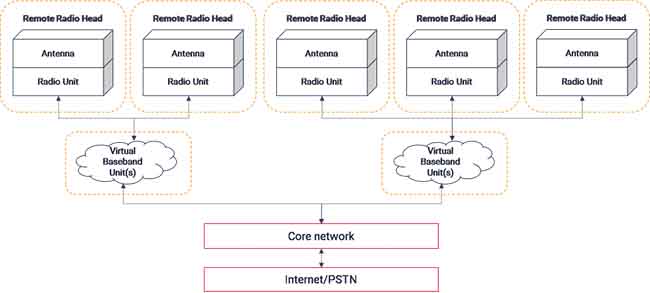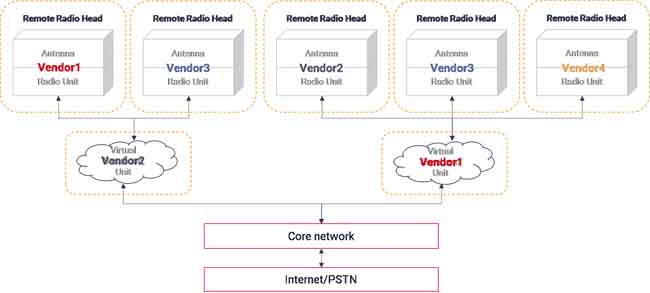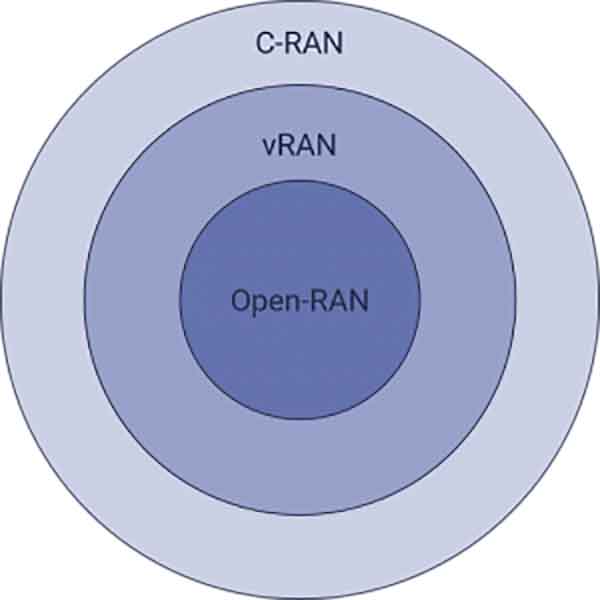
There are now many distinct technologies and standards emerging in the radio access space that involve a shift away from traditional, proprietary radio hardware and network architectures, driven by single vendors, towards new, virtualised platforms and a more open vendor ecosystem.
We have adopted ‘the open RAN’ as an umbrella term which encompasses all of these technologies. Together, they are expected to make the RAN more cost effective and flexible. The three most important sub-components of the open RAN are C-RAN, vRAN and open-RAN.
Centralised RAN (C-RAN), also known as cloud RAN, involves distributing and centralising the baseband functionality across different telco edge, aggregation and core locations, and in the telco cloud, so that baseband processing for multiple sites can be carried out in different locations, nearer or further to the end user.
This enables more effective control and programming of capacity, latency, spectrum usage and service quality, including in support of 5G core-enabled technologies and services such as network slicing, URLLC, etc. In particular, baseband functionality can be split between more centralised sites (central baseband units – CU) and more distributed sites (distributed unit – DU) in much the same way, and for a similar purpose, as the split between centralised control planes and distributed user planes in the mobile core, as illustrated below:
Figure 2: Centralised RAN (C-RAN) architecture

Source: STL Partners
Virtual RAN (vRAN) involves virtualising (and now also containerising) the BBU so that it is run as software on generic hardware (General Purpose Processing – GPP) platforms. This enables the baseband software and hardware, and even different components of them, to be supplied by different vendors.
Figure 3: Virtual RAN (vRAN) architecture

Source: STL Partners
Open-RAN – note the hyphenation – involves replacing the vendor-proprietary interfaces between the BBU and the RRU with open standards. This enables BBUs (and parts thereof) from one or multiple vendors to interoperate with radios from other vendors, resulting in a fully disaggregated RAN:
Figure 4: Open-RAN architecture

Source: STL Partners
RAN terminology: clearing up confusion
You will have noticed that the technologies above have similar-sounding names and overlapping definitions. To add to potential confusion, they are often deployed together.
Figure 5: The open RAN Venn – How C-RAN, vRAN and open-RAN fit together

Source: STL Partners
As the above diagram illustrates, all forms of the open RAN involve C-RAN, but only a subset of C-RAN involves virtualisation of the baseband function (vRAN); and only a subset of vRAN involves disaggregation of the BBU and RRU (open-RAN).
To help eliminate ambiguity we are adopting the typographical convention ‘open-RAN’ to convey the narrower meaning: disaggregation of the BBU and RRU facilitated by open interfaces. Similarly, where we are dealing with deployments or architectures that involve vRAN and / or cloud RAN but not open-RAN in the narrower sense, we refer to those examples as ‘vRAN’ or ‘C-RAN’ as appropriate.
See What’s Next in Tech With the Fast Forward Newsletter
Tweets From @varindiamag
Nothing to see here - yet
When they Tweet, their Tweets will show up here.





























